Art History Lecture
Landscape Pt. 2 – Real vs Ideal
w/ Tom Richards
About
Artist
About
This week we would like to present you with the second lecture of our three-part series given by Tom Richards focusing on various dualisms within the broad genre of “landscape.”
The first lecture “Symbols vs. Facts” introduced us to the series and began with an invitation to consider how people have created art that reflects the world around them throughout time, as well as the symbolic and very real threats and inspirations that the natural world presents.
Throughout this lecture we focus on the “real” and the “ideal” in landscape paintings and drawings. From the realm of dreamy landscapes that reflect the historical context of their maker, to those that ground more surreal compositions with touches of realism, Tom Richards takes us through works by artists such as Titian, El Greco, Vincent van Gogh, Claude Lorrain and Jacob van Ruisdael – carefully considering the purpose of the inclusion of the various vistas, as well as their elements of composition, motifs used by certain artists, and how artists were influenced by others. Through this fantastic exploration of varied works, we are also asked to contemplate the purpose of the landscape in the artwork, be it a study for a later painting, a compositional or narrative element, or a representational “portrait of a place.” Conjured from the imagination or memory of the artist, or studied en plein air, the real and ideal aspects of the natural world in artwork say much more than first meets the eye.
If you would like to further research the works from the lecture we have selected details on artists and artworks below, in the order presented in the lecture!
- “Primavera” by Sandro Botticelli located at the Uffizi Gallery, Florence, Italy.
- Page from the “Turin-Milan Hours” by “Hand G” (Jan van Eyck).
- “Supper at Emmaus” by Titian, located in The Louvre Museum, Paris, France.
- “Saint Jerome in Penitence” by Titian, located in the Pinacoteca di Brera, Milan, Italy.
- “Madonna and Child” by Giovanni Bellini, located in the Pinacoteca di Brera, Milan, Italy.
- “Isenheim Altarpiece” by Matthias Grünewald, Unterlinden Museum at Colmar, Alsace, France.
- Detail from “Adoration of the Holy Name of Jesus” by El Greco, located at the Monasterio de El Escorial in Madrid, Spain.
- Detail from “Jesus in the Garden of Olives” by El Greco located at the Museo Nacional de Bellas Artes in Buenos Aires, Argentina.
- “View of Toledo” by El Greco located at the Metropolitan Museum of Art, New York, USA.
- A deluge Leonardo da Vinci.
- “Perseus and Andromeda” c. 1554–1556 by Titian located in the Wallace Collection, London, UK.
- “Snow Storm: Steam-Boat off a Harbour’s Mouth” by J. M. W. Turner located at Tate, London, UK.
- “The Starry Night” by Vincent van Gogh, located at the Museum of Modern Art, New York, USA.
- “Tree Roots” by Vincent van Gogh, located at the Van Gogh Museum, Amsterdam, Netherlands.
- “Hospital at Saint-Remy” by Vincent van Gogh (1853–1890).
- Several paintings and studies by Claude Lorrain (1600 Chamagne, France–1682 Rome, Italy).
- “Crossing the Brook” by J. M. W. Turner located at Tate, London, UK.
- “A View of Het Steen in the Early Morning” by Peter Paul Rubens, located at the National Gallery, UK.
- “Landscape with the return from the harvest” by Peter Paul Rubens located at the Palazzo Pitti, Florence, Italy.
- Grand Canal from Palazzo Balbi towards the Rialto by Canaletto, located the Ca’Rezzonico, Venice, Italy.
- View on the Grand Canal at San Geremia, Venice by Francesco Guardi, located at The Frick, Pittsburgh, USA.
- “The Avenue at Middelharnis” by Meindert Hobbema, located at the National Gallery, London, UK.
- “Still Life with Ewer, Vessels, and Pomegranate” by Willem Kalf, The J. Paul Getty Museum, Los Angeles, USA.
- Paintings and sketches by Jacob van Ruisdael (Dutch, 1628/9–1682).
- “The Villa Malta” by Frederic Leighton located at the National Gallery, London, UK.
- “Landscape with a Calm” by Nicolas Poussain located at The Getty Museum, Los Angeles, USA.
- “Mont Sainte-Victoire and the Viaduct of the Arc River Valley” by Paul Cézanne located at The Metropolitan Museum of Art, New York, USA.
- A painting by Claude Lorrain juxtaposed with “A Pond in the Morvan” by Charles-François Daubigny in the collection of the Minneapolis Institute of Art, Minneapolis, USA.
- Several paintings by Jean-Baptiste Camille Corot (French, 1796–1875).
- Paintings by George Inness (American, 1825–1894).
Artists




 Unlock with Patreon
Unlock with Patreon

